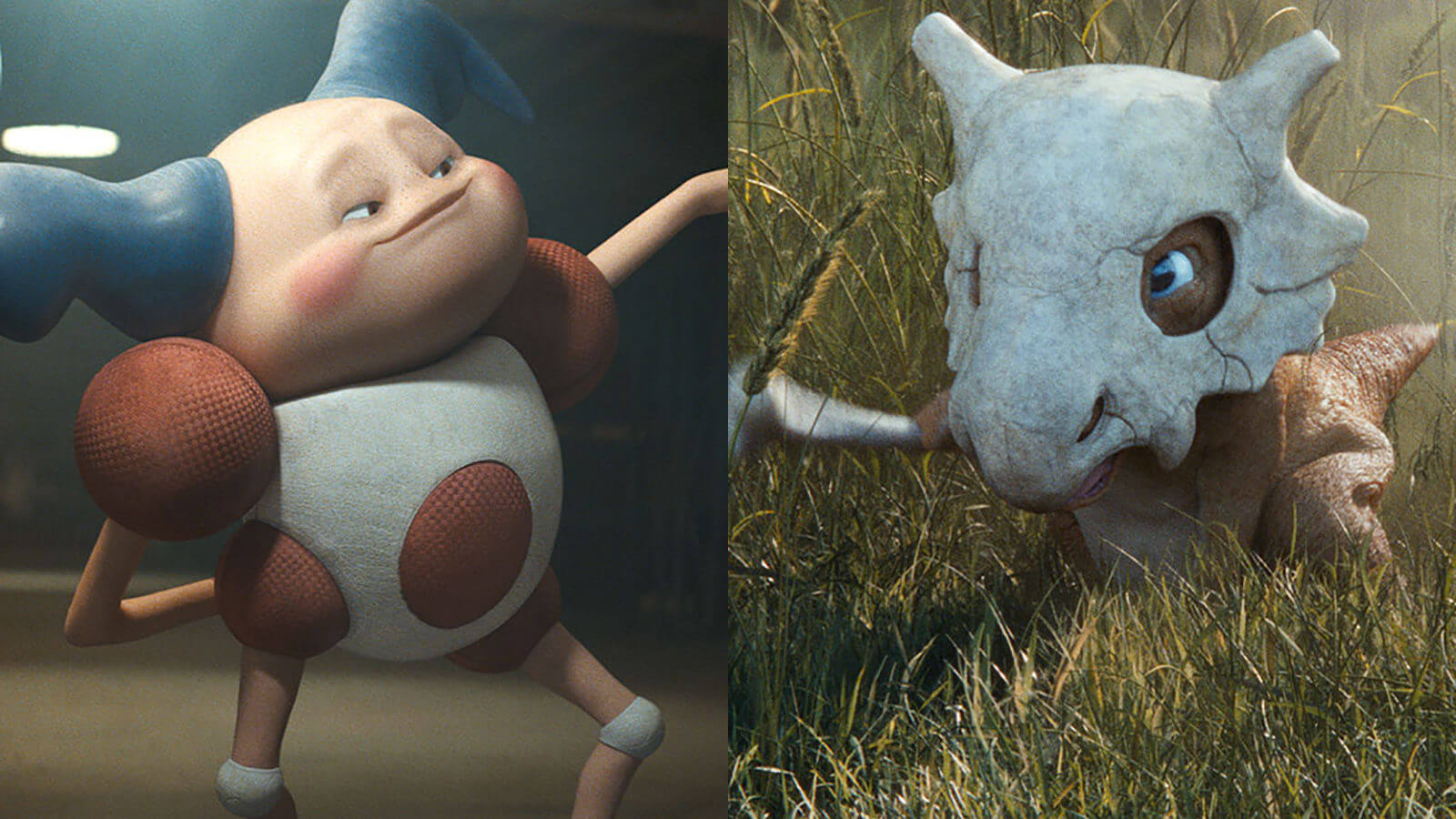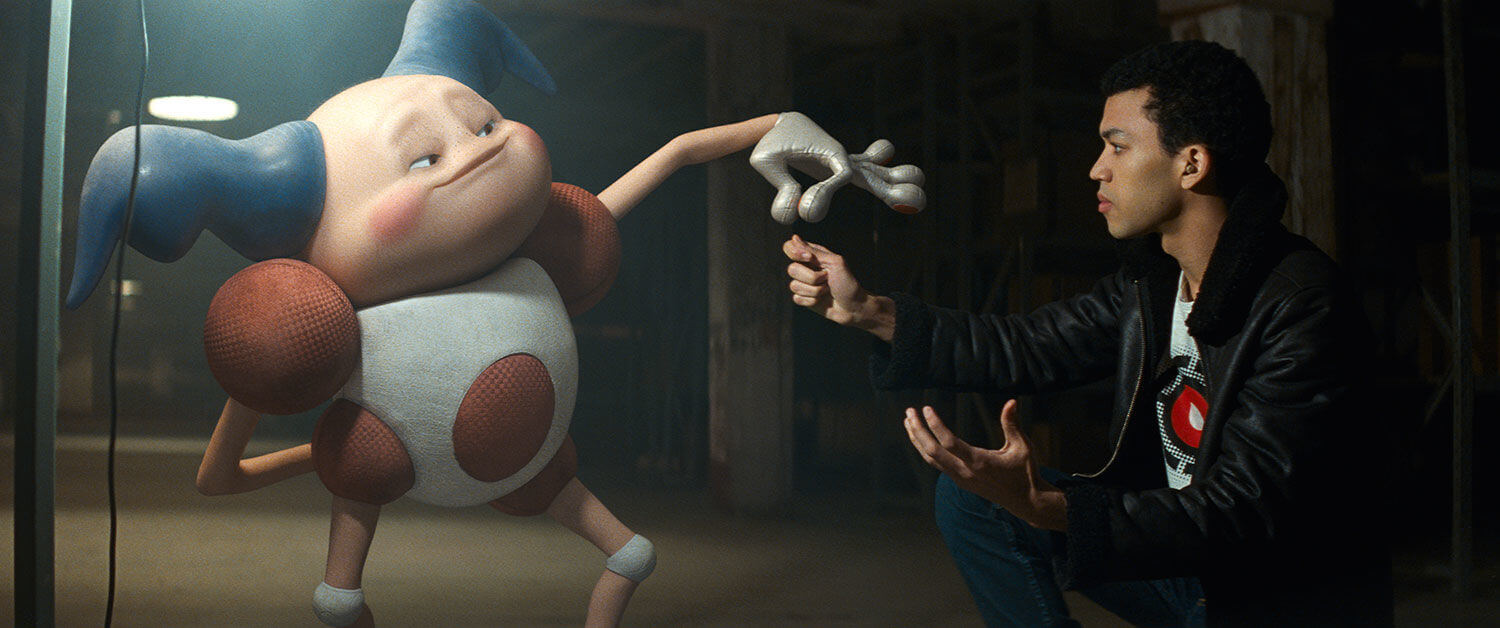The comic inspiration behind Mr. Mime in Detective Pikachu – and why it’s so hard to keep Pokémon kawaii
The Good, the Bad and the Duckly: VFX giants MPC reveal how your favourite – and not so-favourite – Pokémon made the jump from 2D to 3D in the new Detective Pikachu movie. Warning: This article is spoilerific.

On the surface, Pokémon Detective Pikachu may seem like a family film centered around everyone’s favourite yellow pocket monster, but anyone who’s seen the Hollywood adaptation of the Nintendo best-seller since its release this month will know things aren’t that simple.
Firstly is how the film is Hollywood’s first attempt at Pokémon: The Movie, meaning Pikachu (or Detective Pikachu, as voiced by Ryan Reynolds) is more of a guide to the big colourful world of pocket monsters who populate the film’s main setting of Ryme City.
It’s also fair to say that most cinema-goers were surprised by the live-action film’s at times darkly bizarre nature. The rather dour opening reveals an intense interpretation of Pokémon arch foe Mewtwo that isn’t for the kiddies, while one of the most celebrated scenes centres around a figure called Mr. Mime, a creature more nightmare-fuel than Christmas wish list filler. That’s not mentioning Psyduck’s big ol’ eyes, too.
Behind the creation of all these things fright and beauty-ful was the Moving Picture Company (MPC), a global leader in VFX who you may know from films like Blade Runner 2049 (in particular that amazing Rachael scene).
MPC’s VFX supervisor on Detective Pikachu was Pete Dionne, who revealed to us in a phone interview the amazing character design secrets in turning some of Pokémon’s strangest and most beloved from 2D to three-dimensional life.
“The character design of Mr. Mime from the anime (above) is very simplistic compared to the other Pokémon we worked with,” Pete tells us.
“He’s got a humanoid form but with super ‘cartoony’ proportions and face. Honestly he’s creepy, and us imagining him into life as a human would have fueled nightmares without a doubt.
“Early on we decided that the only way to pull off this character was to try and not make him look like an organic, breathing creature but go in the opposite connection, making him look as synthetic as possible.
“Instead of trying to make Mr. Mime’s arms and face look like flesh with anatomically-correct muscle structure, we built and shaded him as if he’s just a huge blob of silicone. The lights then shine on him and make his whole head and arms glow from that synthetic, latex-like material.
“Mr Mime and Justice Smith as Tim Goodman in Legendary Pictures’ and Warner Bros. Pictures’ comedy adventure “Pokémon Detective Pikachu,” a Warner Bros. Pictures release. Courtesy of Warner Bros. Pictures”
“His skin looks very recognizable as being real-world materials but it’s clearly not organic. The same thing with his red shoulder pads. We looked at those from the cartoon and decided to make them red rubber kick-balls with that same kind of textured surface. And for his torso we based the whole thing upon foam.
“It’s like when you have a Nerf football and you squeeze it and it just has those little micro-wrinkles in there and you can see every pore tightened up loosen as you let go of it,” Pete explains.
“We built that same thing into his body so that it explicitly felt like foam. He wasn’t a living, breathing human, so we were really able to have a lot of fun because of the forms, especially his facial performance. We could really push it without it looking creepy, as if it was a real human falling into the ‘uncanny valley.’ And because he had so many of these recognizable photo-realistic shading features on him plus lighting features, he also never really felt too cartoony, despite him having the most cartoonish performance in the whole film.”
The performance of Mr. Mime himself was based on New Zealand physical comic Trygve Wakenshaw, who you can see below ‘fighting’ a toddler in front of a live audience.
“Trygve is just absolutely hilarious. (Director) Rob Letterman brought him in after seeing a video online, and he did about three hours of workshopping the interrogation scene with him, which we recorded with multiple cameras.

“We got absolute gold, and a large portion of that performance in the final film was inspired by Trigve’s original performance in the workshop.”
By: Giacomo Lee|

熱門頭條新聞
- Digital Talent Training Initiativ
- Guangzhou University City to build low-altitude economic demonstration island
- ADK Emotions NY Inc and T-Licensing Inc Announce Global Launch of New ‘Beyblade X’ Series
- UNITE WITH FRIENDS TO DEFEAT CORRUPT KING ARTHUR IN UPCOMING CO-OP ACTION ROGUE-LIKE ‘SWORN’, COMING 2024
- Sushi Battle Rambunctiously Out Now on Switch
- Still Wakes the Deep emerges on 18 June 2024
- New Sky of Tides Trailer Revealed with News of Exciting Animated Series
- Eggy Party announces over 100 Million User-Generated Maps
